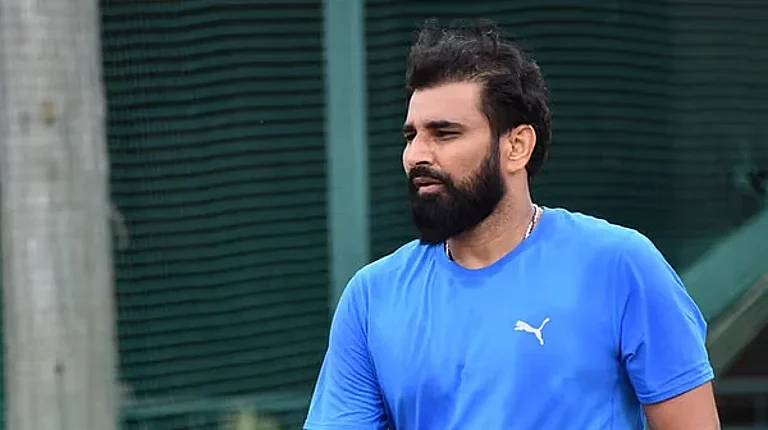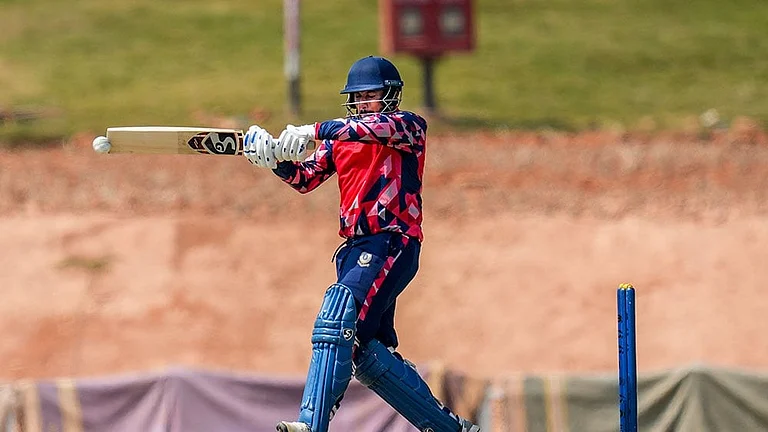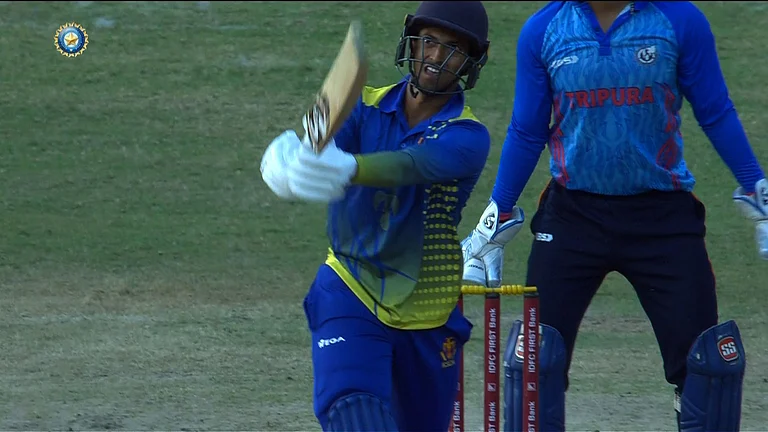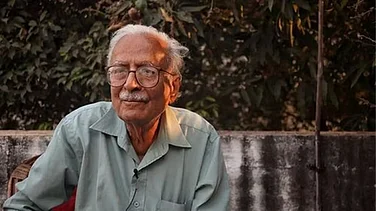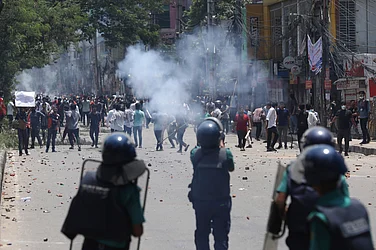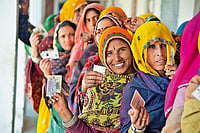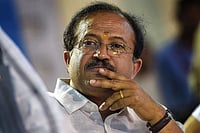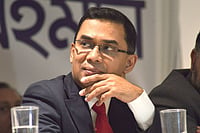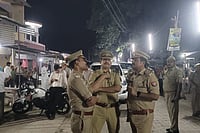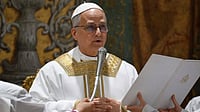Cliches begin to resonate with truth; it’s that moment in Mumbai’s history of terror strikes. Never has the term Maximum City fitted so perfectly—11 terror attacks in 18 years, 40 different locations, 704 lives lost, 2,289 wounded, including the 18 dead (unofficial figures in the media put the fatalities at 21) and 131 injured on the evening of Wednesday, July 13, 2011, when terror struck again, at Zaveri Bazaar, Opera House and Dadar. No other metro in India has seen so much terror or rebounded to the numbing routine of daily life.
Dotted With Blood
Since 1993, over a period of 18 years, Bombay has seen terror attacks in 40 locations, some of which, like Zaveri Bazaar and Ghatkopar, have seen multiple attacks.

Deep in the heart of many a Mumbaikar is a strange mix of emotions—anger, bitterness, helplessness, fear, vulnerability and a question: why is my city attacked over and over again? “I know it’s logical to attack Mumbai because the arteries of the country run through it; there is an immediate, global reaction, but the logic doesn’t stop us from being afraid,” says Rajit Kapoor, a well-known Mumbai-based actor. The fear that the Mumbaikar is resigned to is now palpable, in the eyes of those seven million who board suburban local trains that could be moving bombs. In the gait of those four million who shuffle to bus stops that could be potential targets. Mumbai is indeed a scarred city.
As Mumbaikars cope with the familiar aftermath, platitudes from non-Mumbaikars, trivial and tiresome observations of the chatterati, politicians, investigating agencies, increased nakabandis, meandering court trials, delayed or denied justice—there’s the sense this time round that its famed “indefatigable spirit” could have been its undoing. Chief minister Prithviraj Chavan termed Wednesday’s attack as “an attack on the heart of India”. Mumbaikars like Gerson da Cunha ask, “Isn’t it vital to pull out all stops and protect the heart of India?” Mumbaikars move on, not because they can but because they must.
“We are sitting ducks, angry at being hit, but sitting ducks all the same,” laments Jayesh Labhdi, a diamond merchant who worked at Opera House, the nerve centre of diamond trade, for nearly two decades. That sense of resignation, shocking as it may sound, comes from watching governments, both at the Centre and the state, that do not seem to have worked out firm counter-terrorism strategies and followed them through since the city was first hit by 13 serial blasts on March 12, 1993. “From then on, the excuses trotted out after an attack have been sickeningly identical: densely populated city, offers easy anonymity, cannot be policed in every corner, etc,” lambasts Ashoke Pandit, filmmaker and activist.

| “By targeting Mumbai, the terrorists aim to create divides between its diverse peoples and populations.” Teesta Setalvad, Anti-communalism activist |

| “Mumbai is vulnerable 24/7 because the city is always awake. There isn’t a deserted or quiet spot anywhere.” Rajit Kapoor, Actor | ||

| “There is an obvious pattern to the attacks. Our security agencies have to pay more attention to the dates.” Bose Krishnamachari, Artist |

| “The object behind a terror attack is to create a media blitz. The media is thus an associate of global terror.” Kumar Ketkar, Editor, Maharashtra Times | ||

| “The only real solution to terrorism is addressing communal divisions over the long term. Not AK-47s for cops.” Anand Patwardhan, Filmmaker |

| “Chaos rules in Mumbai. Nobody is in charge. Maybe Obama has a solution, because our netas sure as hell don’t.” Shobhaa De, Writer |
As the first shock of Wednesday’s attack wore off, a blogger evocatively likened Mumbai to a “battered wife—beaten, bruised, raped, choking on her own vomit and blood, but coping the only way she knows how—getting up to each new sunrise to serve a drunken bastard of a husband, thinking that is the fate she must fulfil”. Says Dr Ajit Ranade, chief economist of the Aditya Birla group and co-founder of the Association for Democratic Reforms, “There was immense anger and a will to change things in the wake of 26/11. What happened in recent history shows we haven’t learned any lesson.”
To the families directly impacted by the blasts, debates on Mumbai’s emotions and narratives are meaningless. Sarla Jain is a living embodiment of this. Her husband, Sunil Kumar Jain, a diamond merchant, was killed in the Opera House lane blast. In their 40s, the Jains looked forward to putting their children through “good colleges”, taking annual vacations abroad and so on. “I don’t understand anything anymore,” Sarla sobbed, waiting at a hospital. “I want to believe this is a bad dream, that I will wake up from this nightmare.”
The Sonis are equally inconsolable; they lost one of their younger generation. Pankaj Soni, 21, worked with his father and uncle in the family jewellery store at Lamington Road, near Opera House. He had stepped out for a quick evening snack when the IED went off. Uncle Ramesh found his body at GT Hospital. “What was his crime,” screams Ramesh, unable to come to terms with the loss. “He had gone out to eat, that’s all. Isn’t it safe in this city to go out for a plate of pani puri?”

Shattered world Friends and family console young Vipin Soni whose brother Pankaj was killed in the Zaveri Bazaar explosion
In Zaveri Bazaar, the bullion and diamond trading hub nearby, Rajendrabhai Bhakta says he’s among the most unfortunate ones to have seen all the three blasts—in 1993, 2003 and the ones this Wednesday. “I work in Zaveri Bazaar, I live here. This is my world and it’s shattered over and over again,” he says, shuddering at the thought of the number of body parts of victims he has helped pick up after every attack. Adds shopowner Sameer Shah: “This blast was so powerful that several ground-plus-one storey buildings shook, the diamonds I was weighing were strewn all over.”
The IED that went off at the Dadar bus stop, adjacent to Antonio D’Silva school that had emptied out just 15 minutes earlier, was the second one in the area after Plaza Cinema was hit in 1993. Even as policemen tried to cordon off the area, Sanjay Jadhav, a resident of Dharavi, walked up and down asking passersby if they had seen an old woman injured or taken to a hospital. Jadhav was searching for his mother Bhimabai, a fruit vendor whose “permanent parking spot” was next door to the bus stop. “She didn’t stop working even though I told her so many times,” says Jadhav. “I’m looking for her all over, no hospital seems to have her name on the list.”

Unread Graffiti outside a crematorium after the ’08 strikes
There are other heart-wrenching stories: of a brother breaking down on hearing of his brother’s death, asking, “how do I tell this to his 6-year-old son?”; of aged parents unable to accept the death of their 23-year-old son who was married a month back; of a 21-year-old young man from Raigad who came to Mumbai with dreams in his eyes because his older brother fixed him a job at Panchratna, near Opera House, and must now take his brother’s body back home. Statistics, as always, do not convey individual grief.
Union home minister P. Chidambaram, who rushed to Mumbai Wednesday midnight and surveyed the three sites, stated “this was a coordinated attack by terrorists”. It set the tone for the investigation. Teams of the National Security Guard, National Investigative Agency and experts from the Central Forensic Science Lab flew into Mumbai through the night and Thursday. Nearly 16 hours after the blasts, the investigators concluded that “ammonium nitrate-based explosives and timer devices were used” to trigger off the bombs.

Cut To Jul 13, 2001 Zaveri Bazaar is battered again. (Photograph by Apoorva Salkade)
The ministry of home affairs (MHA) stated that “the IEDs are not crude (which) indicates some level of sophistication”. Investigators pieced together information that the IED at Dadar, placed atop the bus stop, was a low-intensity one; that the one at Opera House was concealed under garbage below a loose slab, on which stood a food cart; while the one in Zaveri Bazaar was strapped to an umbrella and left on a scooter. Within an hour, studied guesses made by the Mumbai police and amplified by television channels pointed to “the hand of Indian Mujahideen backed by the LeT” though Chidambaram steadfastly refused to speculate or lend credence to the guesses. Mumbai police sources told Outlook that “these blasts carry the IM signature all over”.

Mute Solace PM Manmohan Singh and Congress president Sonia Gandhi meet an injured youth at Saifee Hospital
By Thursday noon, 12 teams had been formed, drawn from the Crime Branch and the Anti-Terror Squad (ATS), to be assisted by visiting NIA teams. ATS chief Rakesh Maria appealed to Mumbaikars “to have faith in the Mumbai police because it has identified every single accused in every case so far in Mumbai”. Few took him seriously, given the Mumbai police track record on such cases: in the 2002 Mumbai Central case, a MCOCA judge is yet to be appointed; in the 2002 Ghatkopar case, all eight accused were acquitted recently; in the 2003 Zaveri Bazaar and Gateway of India blast cases, a pota court sentenced LeT operatives to death but appeals are pending in the Bombay High Court. As for the July 2006 train blasts case, the MCOCA court trial was stalled by the accused twice before it finally got under way through an apex court order last year. In most of these blasts cases, police have relied largely on confessions of the accused. The current investigation will have another hurdle: the oneupmanship game currently on between the Crime Branch and the ATS.

Cruel End Mahant Mandal performing the last rites of his brother Kishan. (Photograph by AFP, From Outlook, July 25, 2011)
Aside from this, the investigation focused on analysing the information and data, particularly the phone calls two hours before the blast and cyber cafe traffic in the three affected areas two hours before and after the blasts. MHA sources, requesting anonymity, say “it could in all probability be the work of the Indian Mujahideen—either an old sleeper module may have been activated or new sleeper cells used”. Union home secretary R.K. Singh told Outlook, “Our investigation is under way, so it would be difficult to name an organisation in particular.” It could lend substantiation to the theory that there was a suicide-bomber; Chidambaram spoke of “a severed head” while Maria referred to “a body with wires strapped to it”.
Mumbaikars believe these are matters of detail; such theories and investigations have yielded information in the past but have been of little use in neutralising the next possible attack. “I don’t believe Chidambaram when he says there was no prior intelligence,” says Jayant Jain, who works near Opera House. “I know Mumbai cops caught two IM operative on July 6. Weren’t they questioned, wasn’t there anything from them, wasn’t it intelligence?”
Impotent rage is all the Mumbaikar can feel right now. All he’s expecting is minimum concern for the Maximum City. Even that seems to be asking for too much.
By Smruti Koppikar with Smita Mitra in Mumbai and Chandrani Banerjee in Delhi








